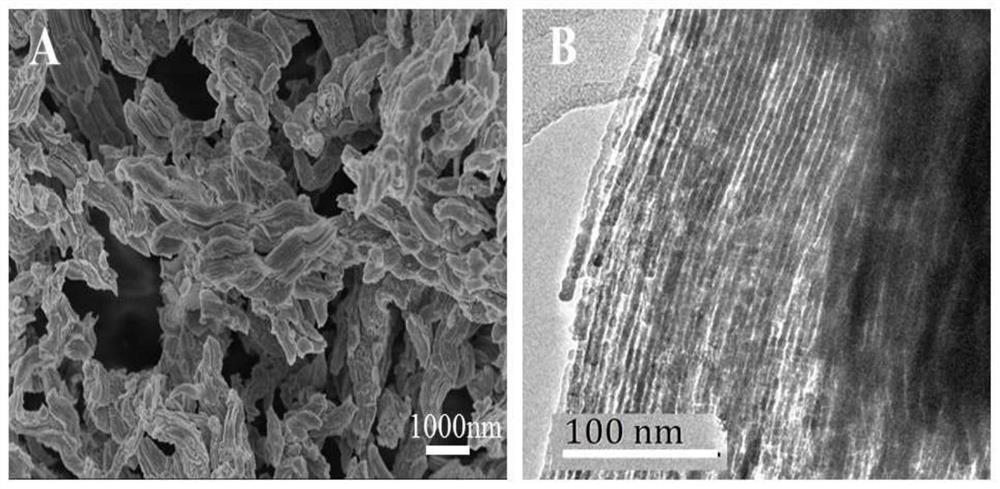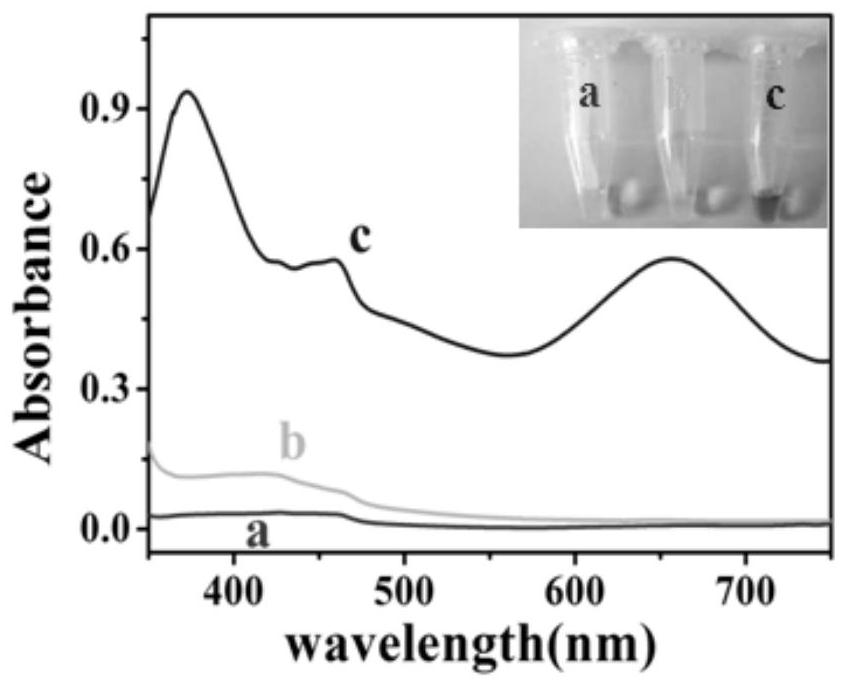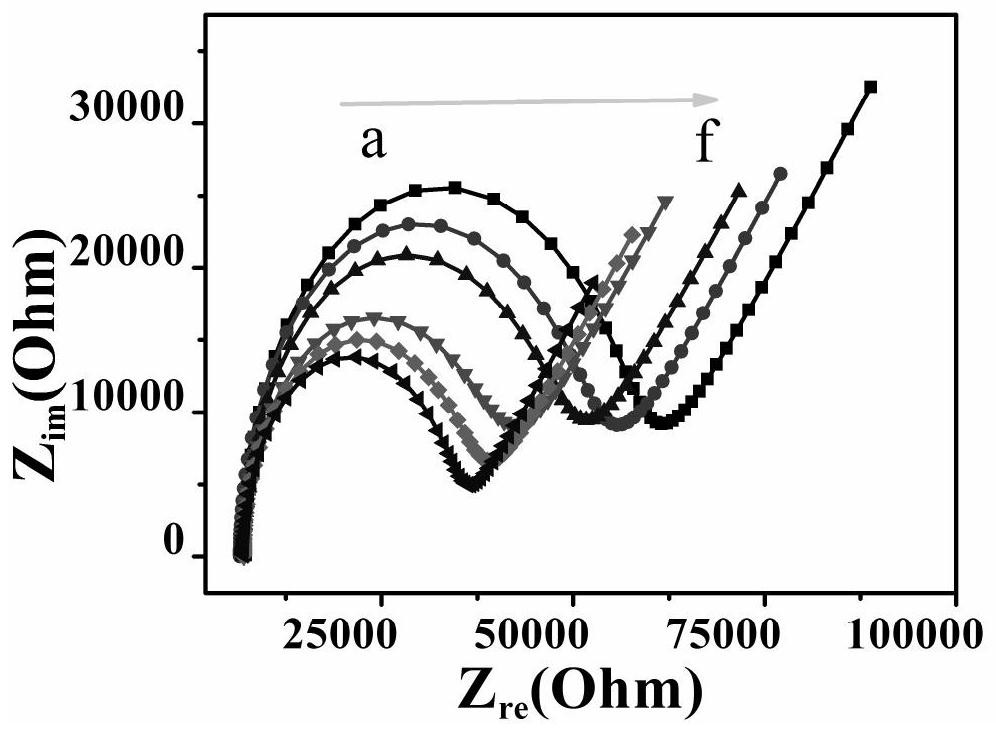A nano-co based 3 o 4 Double-amplified Zearalenone Impedance Sensor Mimicking Enzyme Catalysis
A technology of zearalenone and simulated enzymes, which is applied in the direction of instruments, scientific instruments, and electrochemical variables of materials, can solve the problems of poor stability and variability, and achieve high stability, good biocompatibility, and catalytic activity Good results
- Summary
- Abstract
- Description
- Claims
- Application Information
AI Technical Summary
Problems solved by technology
Method used
Image
Examples
Embodiment 1
[0035] 1. A nano-Co based 3 o 4 A method for preparing a zearalenone impedance sensor with signal double amplification simulating enzyme catalysis is characterized in that the preparation method mainly includes the following steps:
[0036] (1) The glassy carbon electrode is mechanically polished on wet suede with 50nm and 30nm alumina powder in turn, and then rinsed with double distilled water and absolute ethanol for several times until the electrode surface is clean and bright.
[0037] (2) Pipette 5 μL of hyaluronic acid-functionalized TiO with a concentration of 3 mg / L 2 mesogenic solution (TiO 2 @Hya) is added dropwise to the surface of a clean glassy carbon electrode, dried in an infrared light box, taken out, and cooled to room temperature, thus preparing TiO 2 Glassy carbon electrode modified by @Hya;
[0038] (3) Add 1-ethyl-(3-dimethylaminopropyl) carbodiimide hydrochloride (EDC) and N-hydroxysulfosuccinimide sodium salt ( NHS) mixed solution on the surface of ...
Embodiment 2
[0045] The hyaluronic acid functionalized TiO used in the above-mentioned embodiment 1 2 The mesogenic solution was prepared by the following method:
[0046] 1) Dissolve 0.5g of sodium dodecylbenzenesulfonate (SDBS) in 25 mL of 2.2 mol / L HNO 3 In the solution, 500 µL of isopropyl titanate (TIP) was added after continuous stirring and shaking for tens of minutes, and then the above mixture was kept shaking at 48 °C for 24 hours, and then the mixture was washed with deionized water and absolute ethanol for several times. Once, dry overnight at 60°C. After drying, it was calcined at 400 °C for 60 min to fully remove residual organic matter and obtain the final product. The resulting product was dispersed in deionized water and stored in a 4 °C refrigerator until further use.
[0047] 2) TiO functionalized with hyaluronic acid 2 The mesogenic solution was prepared by mixing 500 μL of 5 mg / mL hyaluronic acid solution and 500 μL of 5 mg / mL TiO 2 The mesogens were mixed and sha...
Embodiment 3
[0049] The k-Co used in the above-mentioned embodiment 1 3 o 4 Prepared by the following method:
[0050] 1) Dissolve the addition polymer of 6g of polypropylene glycol and ethylene oxide in 217g of deionized water and 11.8g of 35% hydrochloric acid mixed solution, add 6g of butanol to the above solution at 35°C, and keep stirring for 1h Finally, under the condition of 35° C., 12.9 g of polytetramethoxysilane was added, followed by continuous stirring for 24 h. Subsequently, the above mixture was heated to 100°C and kept for 24h, and the solid product obtained after the hydrothermal treatment was filtered and dried at 100°C. The obtained product was extracted in a mixture of ethanol and hydrochloric acid, calcined at 550°C, and cooled to obtain a KIT-6 template.
[0051] 2) 0.776 g of cobalt nitrate hexahydrate (Co(NO 3 ) 2 ·6H 2 O) Dissolve in 5 mL of absolute ethanol solution as a precursor solution, add 0.2 g of the KIT-6 template prepared in step (1) after continuous...
PUM
| Property | Measurement | Unit |
|---|---|---|
| concentration | aaaaa | aaaaa |
| concentration | aaaaa | aaaaa |
Abstract
Description
Claims
Application Information
 Login to View More
Login to View More - R&D
- Intellectual Property
- Life Sciences
- Materials
- Tech Scout
- Unparalleled Data Quality
- Higher Quality Content
- 60% Fewer Hallucinations
Browse by: Latest US Patents, China's latest patents, Technical Efficacy Thesaurus, Application Domain, Technology Topic, Popular Technical Reports.
© 2025 PatSnap. All rights reserved.Legal|Privacy policy|Modern Slavery Act Transparency Statement|Sitemap|About US| Contact US: help@patsnap.com



